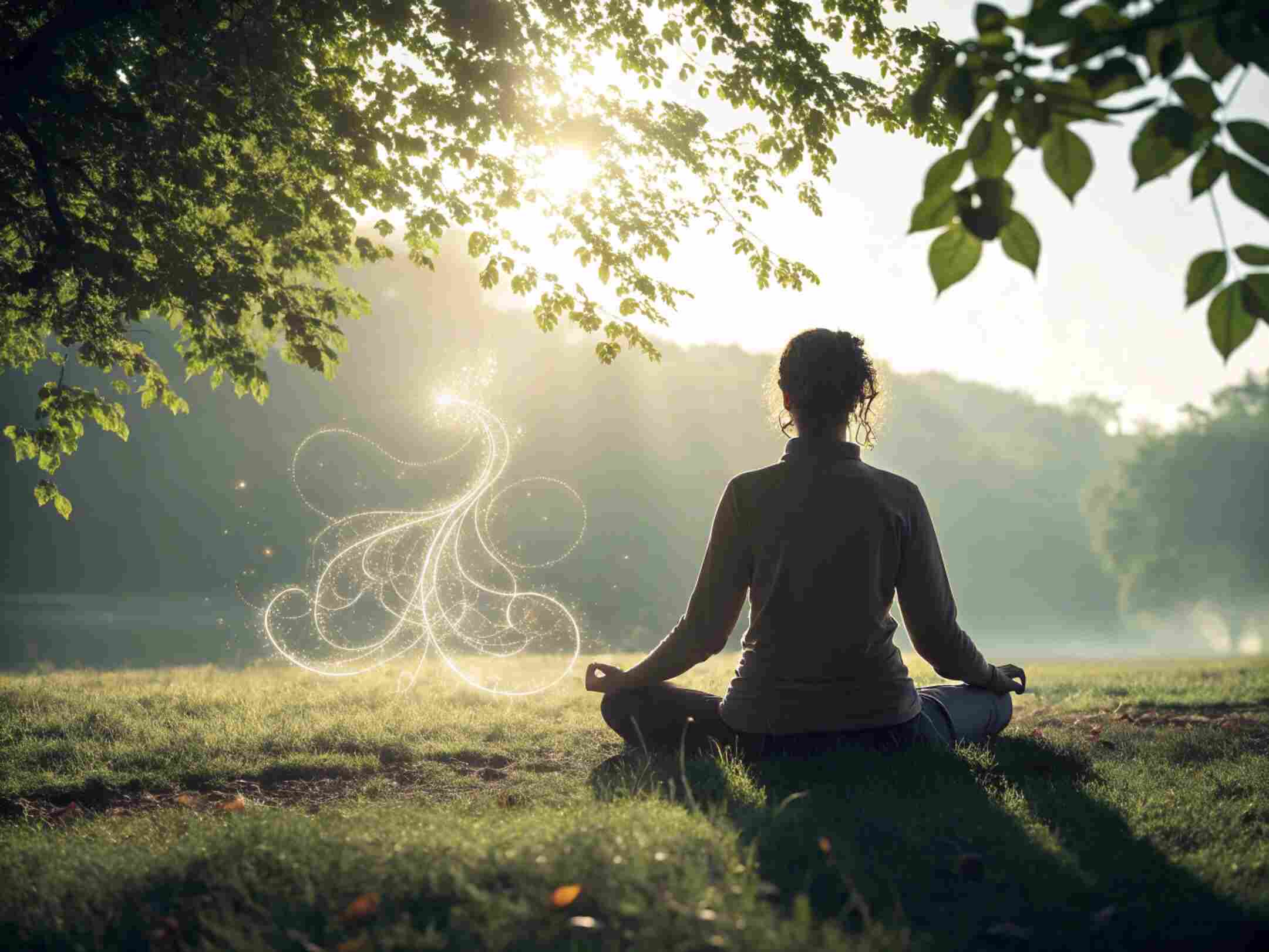What Is Dis-Ease – Real Signs And Hidden Causes!
In the evolving landscape of health and wellness, the idea of healing has moved beyond just treating physical symptoms. More people are beginning to explore the deeper layers of human well-being, ones that involve emotions, thoughts, and energy. The term dis-ease is gaining recognition as a valuable way to describe this internal imbalance that often goes unnoticed.
While conventional medicine focuses on treating diseases, the concept of dis-ease refers to the early stages of imbalance—those subtle, hard-to-describe feelings of being off, unsettled, or emotionally drained. Understanding this concept allows us to be more proactive with our health, encouraging balance and restoration before illness manifests in the body.
What Is Dis-ease in Simple Terms?
At its core, dis-ease represents a state where a person is not at ease. This lack of ease can stem from emotional, psychological, or energetic imbalance. While it is not a medical diagnosis, dis-ease serves as a warning sign—a reminder that something needs attention within the body, mind, or spirit.
The word is often split into two parts: “dis”, meaning “not” or “lack of,” and “ease,” referring to peace, flow, or harmony. Together, they point to discomfort, disturbance, or disconnection within a person’s system. This may not show up on a blood test or medical scan, but it is deeply felt.
Also read: Can You Become Paralyzed From Degenerative Disc Disease – Find Out How To Protect Yourself!
How Dis-ease Differs from Disease?
In traditional medicine, disease refers to a diagnosable condition—one with identifiable symptoms, causes, and treatments. Dis-ease, on the other hand, describes the internal unrest that often comes before physical illness. It is a state of energetic or emotional disharmony, and if ignored for too long, it may evolve into an actual disease.
Key Differences Between Dis-ease and Disease:
| Feature | Dis-ease | Disease |
| Definition | Lack of inner ease or harmony | A diagnosable medical condition |
| Detection | Felt emotionally or intuitively | Measured through medical testing |
| Cause | Emotional imbalance, mental stress, lifestyle | Pathogens, genetic issues, trauma |
| Symptoms | Anxiety, fatigue, disconnection | Fever, pain, inflammation, dysfunction |
| Treatment Focus | Prevention, emotional wellness | Medication, surgery, clinical intervention |
Understanding these differences helps people tune into their body earlier and make mindful changes before facing health crises.
Where Dis-ease Shows Up in Daily Life?
Many people experience dis-ease regularly without even realizing it. It can take many forms and may show up during a stressful work period, after emotional trauma, or while living in a toxic environment. The signs can be physical, emotional, or mental.
- Emotional Signs: Dis-ease can express itself through emotional instability like sudden mood swings, unexplained irritability, or lingering sadness. These emotions may not stem from any specific event, yet they feel overwhelming. They often signal unresolved stress or emotional suppression that the body is trying to release.
- Mental Signs: Mentally, dis-ease often shows up as brain fog, an inability to concentrate, or repetitive overthinking. Tasks feel harder than they should, and decision-making becomes draining. These symptoms suggest mental overload, lack of rest, or emotional weight clouding your thought process and mental clarity.
- Physical Signs: On a physical level, dis-ease may manifest as chronic fatigue, disrupted sleep patterns, or stiffness in the body. Even with rest, the body feels drained or sluggish. These symptoms are early warnings that your internal system is under pressure and not functioning optimally.
These signs are messages from your inner system, asking for attention and care.
The Role of Emotions in Dis-ease: What’s the Connection?
Emotions are not just fleeting feelings. They have a profound impact on physical health. When emotions like anger, fear, sadness, or guilt are unprocessed, they stay trapped in the body. Over time, this leads to energetic congestion, disrupting natural flow and creating dis-ease.
Studies in psychosomatic medicine have shown that chronic stress and emotional repression can weaken the immune system, increase inflammation, and even lead to serious diseases. This reinforces the mind-body connection—showing us that emotional health is not separate from physical wellness.
Common Root Causes of Dis-ease – Simple List!
Many factors contribute to internal imbalance, and they often work together. Dis-ease isn’t caused by one thing but by accumulated patterns over time. Below are some of the most common root contributors:
Unresolved Emotional Wounds:
Deep emotional pain from past trauma, loss, or neglect can live in the nervous system for years. When unaddressed, this emotional residue keeps the body in survival mode. Over time, it creates constant tension and disconnection, making the body vulnerable to chronic stress and the early signs of dis-ease.
Toxic Relationships:
Living in emotionally unsafe or draining relationships—whether at home, work, or socially—creates continuous stress. Emotional manipulation, criticism, or isolation damage self-worth and disrupt inner peace. The longer such patterns continue, the more they take a toll on mental clarity, emotional balance, and ultimately contribute to a dis-eased internal environment.
Poor Lifestyle Habits:
Irregular sleep, processed foods, physical inactivity, and digital overuse gradually reduce energy and resilience. These habits impair digestion, emotional regulation, and mental focus. When sustained, they push the body out of its natural rhythm and lead to long-term imbalance that lays the foundation for dis-ease to develop and persist.
Environmental Stress:
Urban noise, polluted air, crowded spaces, and lack of nature exposure create subtle but consistent tension. The body stays alert in these overstimulating environments, unable to fully relax or recover. This stress overload interferes with natural healing cycles, eventually manifesting as mental fatigue and physical symptoms of dis-ease.
Also read: Health.Eclinicalworks.Com Patient Portal Gaddipatik Patient Portal – Easy Login & Benefits!
Recognizing the Early Symptoms of Dis-ease – Act Before It’s Too Late!

When disease is present, it usually shows up in whispers before it screams through illness. Here are some of the subtle signs you should not ignore:
- Mental Fog: You may notice a consistent lack of clarity or focus in your thinking. Simple decisions feel complicated, and mental tasks take longer than usual. This mental fog is often a result of emotional overwhelm or internal imbalance that needs calming attention.
- Emotional Fatigue: Everyday responsibilities begin to feel heavy. Even basic tasks like getting out of bed or holding conversations can feel exhausting. This emotional fatigue is a signal that your energy is being drained faster than it’s being replenished, often due to underlying stress.
- Disconnection: There’s a noticeable distance between you and others, or even between you and yourself. You may feel emotionally numb, detached, or unable to experience joy. This sense of disconnection is a quiet form of dis-ease that builds when inner needs are ignored.
- Unexplained Aches: You start feeling random pains, tightness, or discomfort in your body with no clear physical cause. These aches may come and go, but they are often signs of unprocessed emotions or prolonged stress stored physically within your muscles and tissues.
- Craving Silence: You find yourself longing for solitude, peace, or stillness more often than usual. Noise and social activity feel overwhelming. This craving for silence is your nervous system asking for a break and signaling that internal chaos needs to be gently released or grounded.
These early warning signs are best addressed through self-awareness and compassionate care.
Holistic Approaches to Healing Dis-ease – Backed by Real Wellness Experts!
Healing dis-ease starts with awareness and self-connection—not with prescriptions. It’s about listening to your inner world and supporting your well-being across all levels: physical, emotional, mental, and energetic. These holistic approaches offer gentle, effective ways to restore inner balance and ease.
Mindfulness and Meditation:
Mindfulness and meditation help calm the nervous system and regulate emotional stress. Regular practice creates space between your thoughts and reactions, reducing anxiety and confusion. Just 10 minutes a day of focused breathing or stillness can improve clarity, emotional balance, and your connection to the present moment.
Expressive Therapies:
Creative practices like journaling, painting, dancing, or music allow emotions to surface and move through you without needing explanation. These outlets give unspoken feelings a safe place to be released, helping to clear emotional blocks that contribute to dis-ease and support overall emotional healing and freedom.
Movement-Based Healing:
Gentle body movement through yoga, tai chi, or somatic exercises helps release trapped energy and physical tension. These practices bring you into deeper connection with your body, increase circulation, and support natural healing rhythms—allowing your system to shift from stress to calm with intentional motion.
Energy Healing:
Modalities like Reiki, acupuncture, or chakra balancing target the body’s subtle energy systems. These methods help clear energy blockages, restore flow, and ease the emotional or spiritual roots of dis-ease. Many people report feeling lighter, calmer, and more in tune with themselves after consistent sessions.
Nutrition and Detox:
Whole foods, clean hydration, and herbal support help the body detoxify and function at its best. Removing processed ingredients and adding nutrient-dense options reduces inflammation and supports cellular health. A clean internal environment strengthens not just your immune system but also your emotional and mental resilience.
Natural Ways to Rebalance from Dis-ease – Fast, Gentle Solutions!
| Healing Tool | Benefit Provided | Easy Way to Start |
| Mindfulness Meditation | Lowers stress, boosts awareness | 10 mins morning breathing exercises |
| Journaling | Emotional release, self-discovery | Write 3 feelings every night |
| Breathwork | Recharges energy, reduces anxiety | Box breathing for 5 minutes |
| Herbal Teas & Adaptogens | Support adrenal function, calm nerves | Chamomile, Ashwagandha, Holy Basil |
| Gentle Movement | Improves circulation, releases tension | 15 mins of yoga or walking after meals |
These healing tools, when practiced consistently, create long-term resilience and inner calm.
Why Addressing Dis-ease Matters for Future Health?
Addressing dis-ease is essential for long-term well-being because it helps prevent deeper physical and emotional breakdowns. When early signs of imbalance are ignored, they can grow into chronic illness, burnout, or emotional disconnection.
However, those who tune into their body’s signals often experience a clearer sense of direction, stronger immunity, emotional release, and improved relationships. They also tend to rely less on medications and more on self-awareness for healing. Viewing disease not as a problem, but as a guide, empowers growth and transformation in body, mind, and spirit before real damage takes hold.
FAQs:
What is meant by dis-ease?
Dis-ease refers to a state of imbalance or lack of ease within the body, mind, or spirit. It’s not a medical diagnosis but an early sign that something is off internally. Dis-ease often appears as emotional stress, fatigue, or mental fog before any physical illness develops.
What causes dis-ease?
Dis-ease is caused by multiple factors including unresolved emotions, chronic stress, unhealthy lifestyle habits, environmental toxins, and energy imbalances. When these issues persist over time, they create tension in the body and mind, eventually disrupting overall well-being and potentially leading to disease.
What is the connection between disease and ease?
The word “disease” comes from “dis” and “ease,” meaning a lack of ease or comfort. Before a diagnosable illness appears, there is often a period of dis-ease—where the body signals discomfort through subtle symptoms like restlessness, low energy, or emotional imbalance.
What qualifies as a disease?
A disease is a medically recognized condition characterized by specific symptoms, causes, and physical changes in the body. It can be infectious, genetic, or lifestyle-related and usually requires medical intervention. Unlike dis-ease, disease is diagnosed through tests and clinical evaluation.
Can dis-ease turn into disease if ignored?
Yes. If the subtle signs of dis-ease are left unaddressed, they may build up over time and evolve into more serious, diagnosable health conditions. By paying attention early, you can restore balance and prevent long-term damage to your body and emotional health.
Conclusion:
Dis-ease is more than just discomfort—it’s your body’s subtle way of signaling that something within is out of balance. These early emotional, mental, or physical signs should not be ignored, as they often precede more serious health conditions. By paying attention to these signals and addressing the root causes through awareness, lifestyle changes, and holistic healing, you empower yourself to prevent long-term illness.
True wellness begins from within, and recognizing dis-ease early allows you to heal deeply, grow consciously, and maintain balance across body, mind, and spirit. It’s a call to slow down, listen inward, and respond with care. The body speaks in whispers long before it breaks down—and when we learn to honor those whispers, we take the first true step toward lifelong healing and transformation.
Related post:






